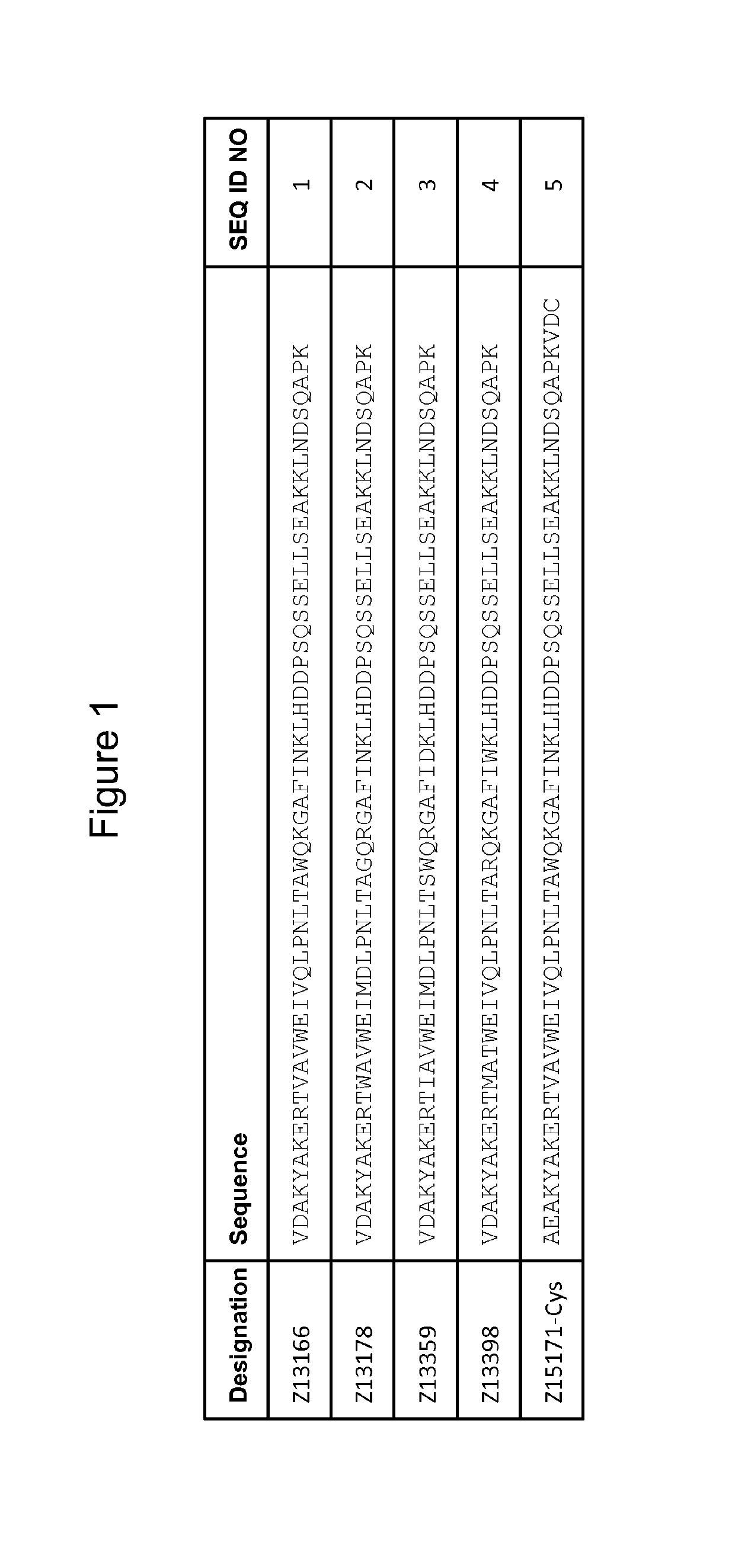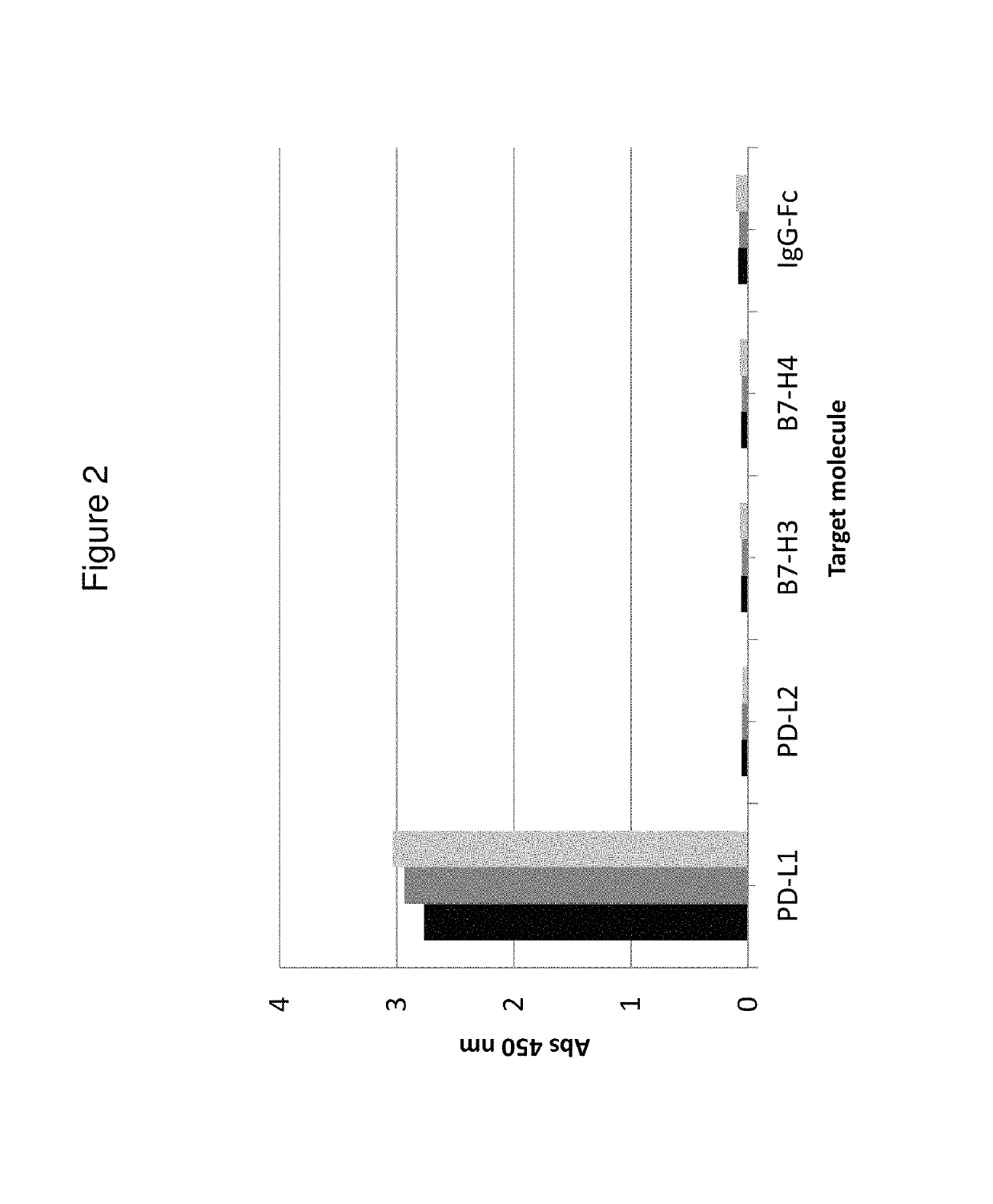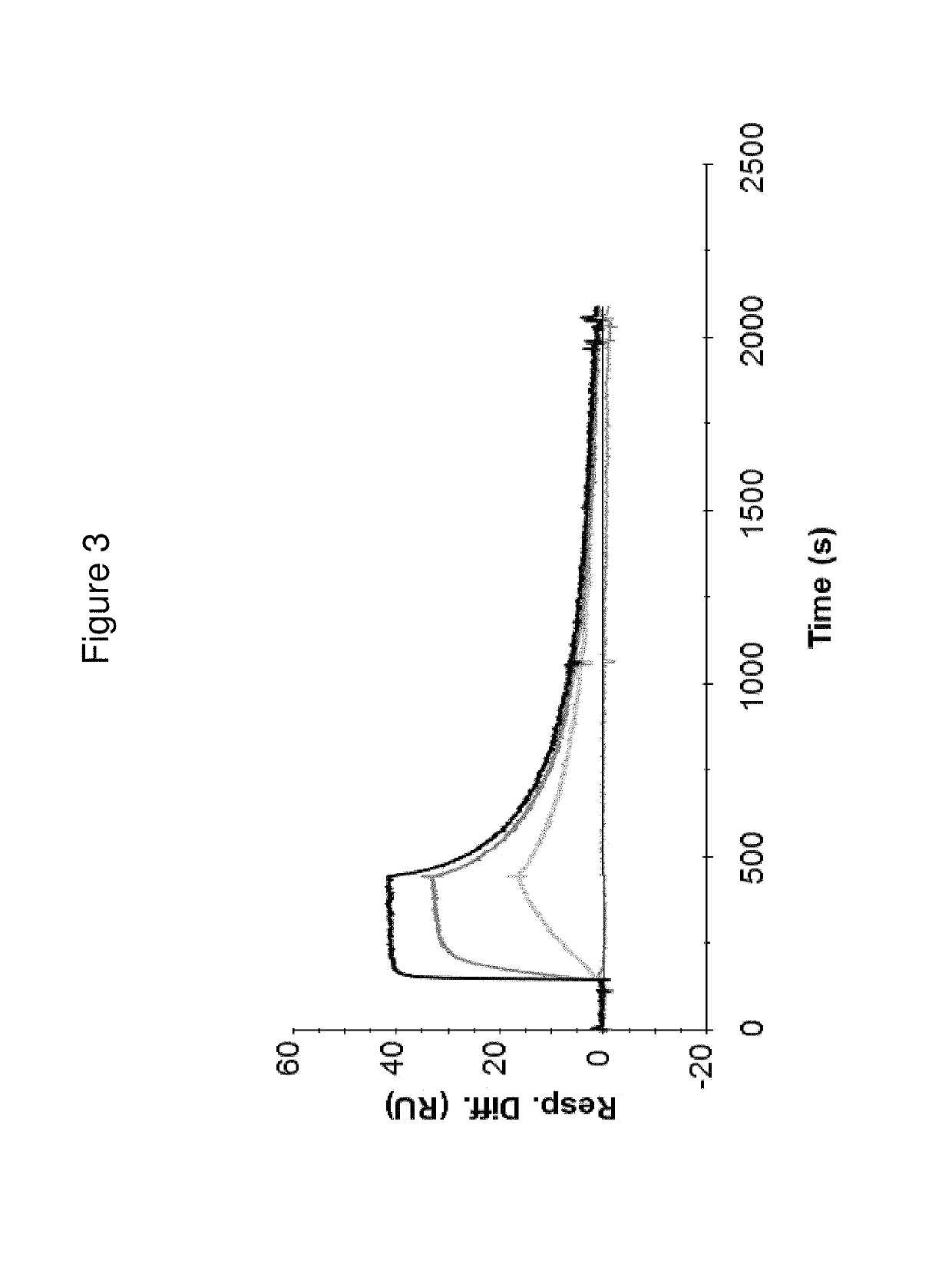Polypeptide
a polypeptide and polypeptide technology, applied in the field of polypeptides, can solve the problems of inability to use monoclonal antibodies optimally, poor tissue distribution and penetration capacity of relatively large antibody molecules, and the association of immune-related toxicities of ipilimumab, so as to increase the in vivo half-life of fusion proteins and increase the in vivo half-life
- Summary
- Abstract
- Description
- Claims
- Application Information
AI Technical Summary
Benefits of technology
Problems solved by technology
Method used
Image
Examples
example 1
Selection and Screening of PD-L1 Binding Z Variants
[0204]In this Example, human PD-L1 (hPD-L1) was used as target in phage display selections using a phage library of Z variants. Selected clones were DNA sequenced, produced in E. coli periplasmic fractions and assayed against PD-L1 in ELISA (enzyme-linked immunosorbent assay).
Materials and Methods
[0205]Biotinylation of Target Protein:
[0206]hPD-L1 (human PD-L1 Fc Chimera, R&D Systems, cat. no. 156-B7-100) was biotinylated using No-Weigh EZ-Link Sulfo-NHS-LC-Biotin (Thermo Scentific, cat. no. 21327) at a 10× molar excess, according to the manufacturer's recommendations. The reaction was performed at room temperature (RT) for 40 min. Next buffer exchange to PBS (10 mM phosphate, 137 mM NaCl, 2.68 mM KCl, pH 7.4) was performed using a Slide-a-lyzer dialysis cassette (10000 MWCO, Thermo Scientific, cat. no. 66383) according to the manufacturer's instructions.
[0207]Phage Display Selection of PD-L1 Binding Z Variants:
[0208]A library of ran...
example 2
Subcloning and Production of PD-L1 Binding Z Variants
Materials and Methods
[0235]Subcloning of Z Variants with a His6-Tag:
[0236]The DNA of four PD-L1 binding Z variants, Z13166 (SEQ ID NO:1), Z13178 (SEQ ID NO:2), Z13359 (SEQ ID NO:3) and Z13398 (SEQ ID NO:4) were amplified from the library vector pAY02592. A subcloning strategy for construction of monomeric Z variant molecules with N-terminal Hise tag was applied using standard molecular biology techniques (essentially as described in detail in WO 2009 / 077175 for Z variants binding another target). The Z gene fragments were subdoned into the expression vector pAY01448 resulting in the encoded sequence MGSSHHHHHHLQ-[Z#####]-VD (SEQ ID NO:81).
[0237]Subcloning of a Z Variant with a C-Terminal Cys:
[0238]The Z variant Z13166 (SEQ ID NO:1) was mutated to start with the N-terminal amino acids AE instead of VD, resulting in Z15171 and further subcloned with a C-terminal cysteine using standard molecular biology techniques. The resulting enc...
example 3
Characterization of Primary PD-L1 Binding Z Variants
[0248]In this Example, a subset of Z variants was characterized in terms of various in vitro binding properties and stability. The specificity and affinity for human PD-L1 of the Z variants were analyzed by Biacore and binding to PD-L1 expressing cells was analyzed using Fluorescence Activated Cell Sorting (FACS). Furthermore, the ability of Z variants to block the binding of PD-L1 to its receptor PD1 was investigated using AlphaLisa. The melting temperature and secondary structure was analyzed by circular dichroism (CD) spectroscopy.
Materials and Methods
[0249]Biacore Kinetic and Specificity Analysis:
[0250]Kinetic constants (ka and kd) and affinities (KD) for hPD-L1 were determined for the His6-tagged Z variants Z13166 (SEQ ID NO:1), Z13178 (SEQ ID NO:2), Z13359 (SEQ ID NO:3) and Z13398 (SEQ ID NO:4) using a Biacore 2000 instrument (GE Healthcare). All four Z variants were also tested for binding against the sequence-related protei...
PUM
 Login to View More
Login to View More Abstract
Description
Claims
Application Information
 Login to View More
Login to View More - R&D
- Intellectual Property
- Life Sciences
- Materials
- Tech Scout
- Unparalleled Data Quality
- Higher Quality Content
- 60% Fewer Hallucinations
Browse by: Latest US Patents, China's latest patents, Technical Efficacy Thesaurus, Application Domain, Technology Topic, Popular Technical Reports.
© 2025 PatSnap. All rights reserved.Legal|Privacy policy|Modern Slavery Act Transparency Statement|Sitemap|About US| Contact US: help@patsnap.com



